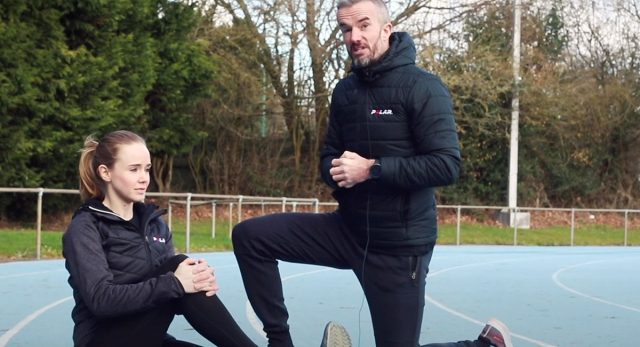Walk into any gym or fitness center and you’ll see two general types of athletes.
On the left you have your runners, with their slender build and aptitude for all things endurance. On the right you have your body builders and power lifters, with chiseled physiques and pensions for lifting heavy things.
Both groups take their disciplines to the extremes, squeezing every ounce of performance out of their bodies through highly-specialized training plans.
Sure, we’re oversimplifying things here, but luckily the lines have become a bit blurred on both accounts as of late. Runners have recognised the value of incorporating strength training into their workouts, with power lifters the reverse.
But let’s say you’re a runner who, like many, aren’t motivated to head to the gym and pump iron. After all, running is your forte, so how can you integrate strength training into your running workouts to get the best of both worlds while doing something you love?
To get some insight into combining strength and running workouts, as well as general thoughts on why runners should consider a more well-rounded training plan, we turned to Alex Hutchinson. He’s a physicist-turned-endurance expert who has immersed himself in the endurance world for decades, and is the author of Endure, a critically-acclaimed book on the elastic limits of human performance.
Why should runners include strength training into their training plan? What are some benefits?
Runners do strength training for lots of different reasons. For example, many people believe that strength training will help reduce your risk of injury. That makes sense, although there isn’t a lot of evidence to support that claim.
In terms of scientific evidence, the most well-supported reason for doing strength training is to improve your running economy. Strength training improves the way signals travel from your brain to your muscles, so it allows you to run at the same pace while using slightly less energy.
This is legit, but to be honest, that benefit is very subtle – it’s something that only matters if you’re concerned about squeezing out the last fraction of a percent from your abilities.
Once you get past your 30s, you start losing muscle mass slowly but steadily for the rest of your life.
Personally, the reason I include strength training in my routine is for general health. Activities like running are great for your health, but they don’t do much to build or maintain muscle, so strength training is a good way to help ensure that you’re still able to stay active as you age.
Is it possible to include strength As Part Of RUnning workouts?
Sure, there are lots of hybrid workout options that mix running and strength training in some form of high-intensity circuit. That may be useful for all-around fitness, but since running is my highest priority I prefer to keep them separate.
I sometimes do them consecutively, hitting the weights immediately before or after a run, but I seldom stop and do push-ups in the middle of a run or anything like that.
What Are Some simple must-try running workoutS that build both strength AND endurance?
It’s true that hill sprints are an excellent form of strength training that emphasize the muscles you’re most reliant on for running.
There some interesting research suggesting that ankle strength is crucial for runners. I once asked a very prominent biomechanics expert what form of strength training he recommended to maximize ankle strength, and he said “Personally, I just run hills.”
I often do relatively short hills that take 40 to 60 seconds each, with a jog back down the hill as recovery. That provides a mix of strength and aerobic fitness. To shift the balance toward strength building, try some 10-second hill sprints at maximum speed, with several minutes of walking recovery between each one.
Doing these sprints uphill forces you to work against gravity, and also lowers your risk of getting injured because you can’t go quite as fast as you would on level ground.
What balance should the average runner strike between endurance/running and strength training?
It really depends on what goals are most important to you, and—let’s be honest—what you enjoy most. It’s better to settle into a routine and do running workouts that you love and will maintain for years than to force yourself to do something that feels like an uphill battle, just because you think it will be better for you.
Having said that, I think a pretty good balance would be running four to six times a week, and doing some sort of strength training at least twice a week.
I always combine my strength training with an easy run; on those days, I do the strength training (mostly bodyweight exercises like pull-ups and box jumps) first, because if I started with the run I would just keep on running and skip the strength training.
If you liked this post, don’t forget to share so that others can find it, too.
Or give it a thumbs up!
I like this article
Please note that the information provided in the Polar Blog articles cannot replace individual advice from health professionals. Please consult your physician before starting a new fitness program.






